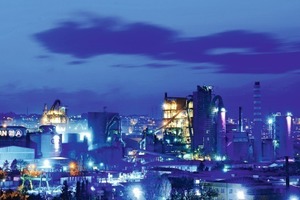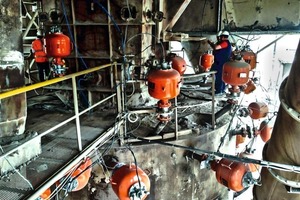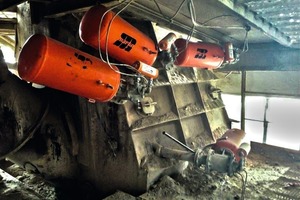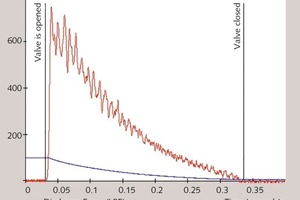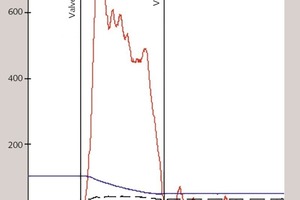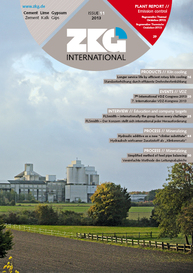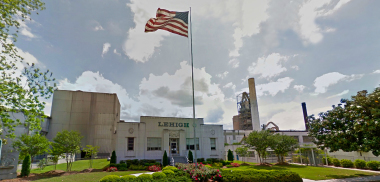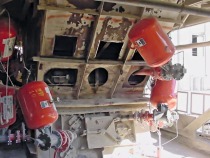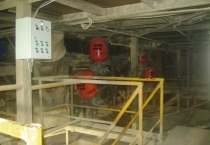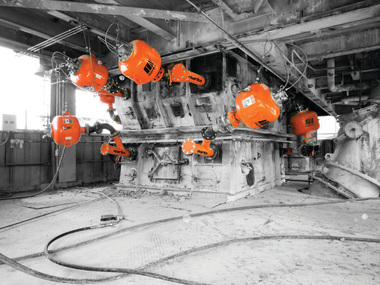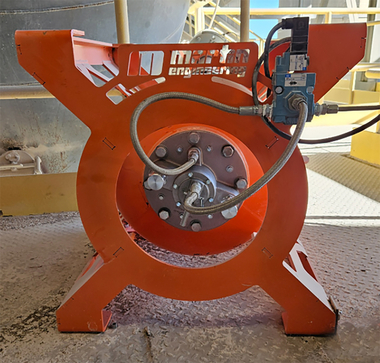Hurricane Season at Akçansa Büyükçekmece
Literally the pioneer in alternative fuel use in Turkey’s cement industry, the Büyükçekmece plant was issued the country’s first license for its process in 2005, the same year that it installed a special self-built tire feeder. The current fuel ratio is approximately 77 % pet coke and 23 % alternative fuels, including waste oil, refuse-derived fuels (RDFs), tires, industrial plastics and dried sewage sludge.
1 Accumulation issue
These accumulations can be particularly severe when fuels with high sulfur or chloride content are used, such as pet coke and RDF. In extreme cases, massive build-ups can suddenly break loose and suffocate the process, potentially causing significant damage to any equipment.
In addition to the necessary cooling time, the cyclone cleanout process required 3-4 people working with jackhammers through access doors for several hours while they battle the heat and dust. Additional energy was required to re-start the process and get it back up to operating temperature. Unfortunately, even after expending all that time and energy, the accumulation became so severe that the problem would typically return within a week, choking off the material flow and forcing yet another shutdown. Plant officials contacted Martin Engineering Turkey to conduct an audit of the process, and a joint effort was developed to determine a solution.
2 A proven approach
The two basic components of an air cannon are a fast-acting, high-flow valve and a pressure vessel (tank). The device works when compressed air in the tank is suddenly released by the valve and directed through a nozzle, which is strategically positioned in the tower, duct, cyclone or other location. Often installed in a series and precisely sequenced for maximum effect, the network can be timed to best suit individual process conditions or material characteristics.
The air blasts help to break down material accumulations and to clear blocked pathways, allowing solids and/or gases to resume normal flow. In order to customize the air cannon installation to the service environment, specific air blast characteristics can be achieved by manipulating the operating pressure, tank volume, valve design and nozzle shape.
Engineers from the two companies met to discuss details, including air cannon design, nozzle selection and specific locations to maintain optimum material flow. To control the material buildups and maintain production stability, 29 Martin® Hurricane Air Cannons were supplied by Martin Engineering Turkey, each with a 70 liter reservoir, installed in strategic locations by a Martin® Service Team (Fig. 2).
The installation included hi-velocity and fan-jet nozzles with Martin® Thermo Safety Shields to protect maintenance personnel when they inspect or service the air cannon system. Also known as blast guards, Thermo Safety Shields are situated between the process and the air cannon valve itself. Available in manual or air-operated models, these devices help prevent material backflow during service and shield the air cannon valve components from material spray.
The new air cannons were arranged in three groups, each directed by the plant’s control room. The discharge sequence moves upward in a spiral, with cannons firing 10 seconds apart. The entire 80-90 second cycle typically repeats approximately every 20 minutes, but operators have varied the time from 5 to 45 minutes, depending on specific operating conditions.
Since the installation of the new air cannon network, no unscheduled shutdowns have been caused by material buildup in that section of the cyclone. With the problem solved, engineers have turned their attention to some additional buildups higher in the deep tube, an area not covered by the air cannon network. During its next shutdown, the plant will install an additional set of four 70 L Hurricane Air Cannons, locating them above the cyclone deep tube.
3 Cost reduction
When equipped with a piston return reservoir, the air cannon produces an initial blast force of the same strength, but the duration of the discharge is reduced. Instead, the air retained inside the cannon’s tank minimizes the overall air consumption without reducing initial output force. Since the main air tank is never completely evacuated, the volume of air required to refill after each discharge is reduced. With the air cannon’s peak force unaffected, the same amount of work can be accomplished with half the amount of compressed air (Figures 4 and 5).
Before the installation of the return reservoirs, the air consumption of the 22 Tornado Air Cannons at Büyükçekmece was estimated at 2 cubic meters per minute, or an annual total air consumption of approximately 525 600 cubic meters. If the cost of service air is estimated at two cents per cubic meter, the total air cost would be US$ 10 512 per year. After installation of the reservoirs, the annual air consumption has been reduced to 262 800 m3, while retaining the same air cannon performance. If the minimum lifetime of an air cannon is estimated at 10 years (not an unreasonable prospect), the cost savings over that period would be US$ 52 560.

